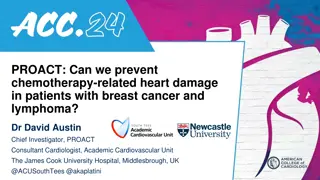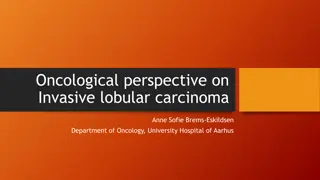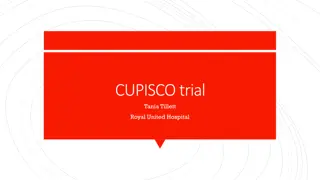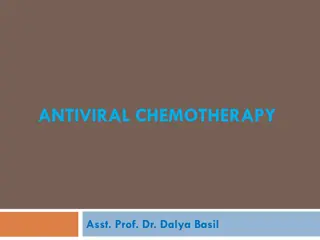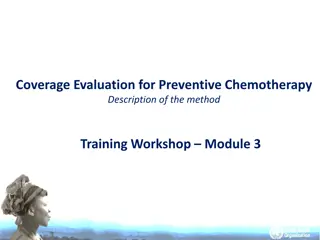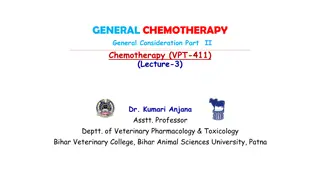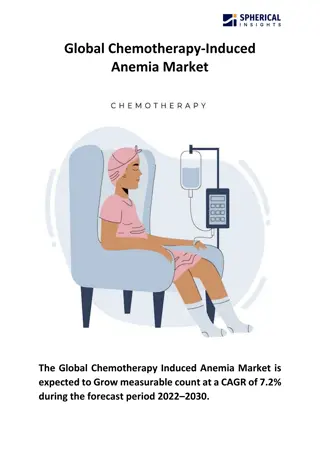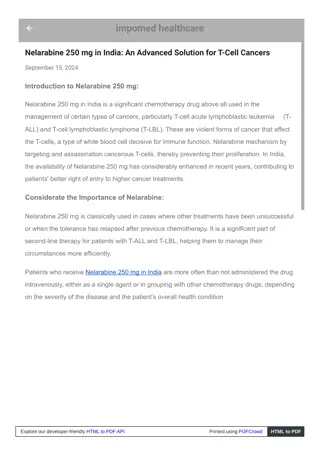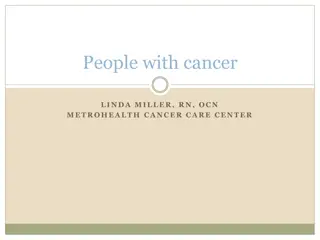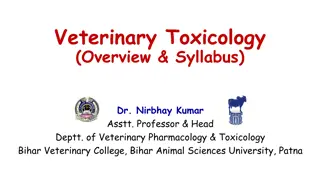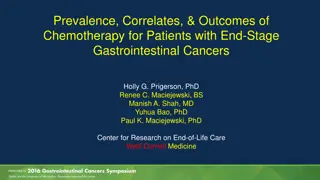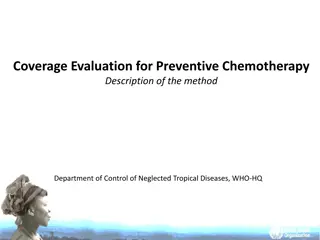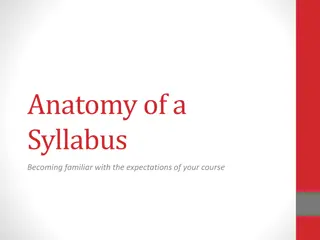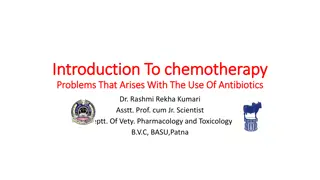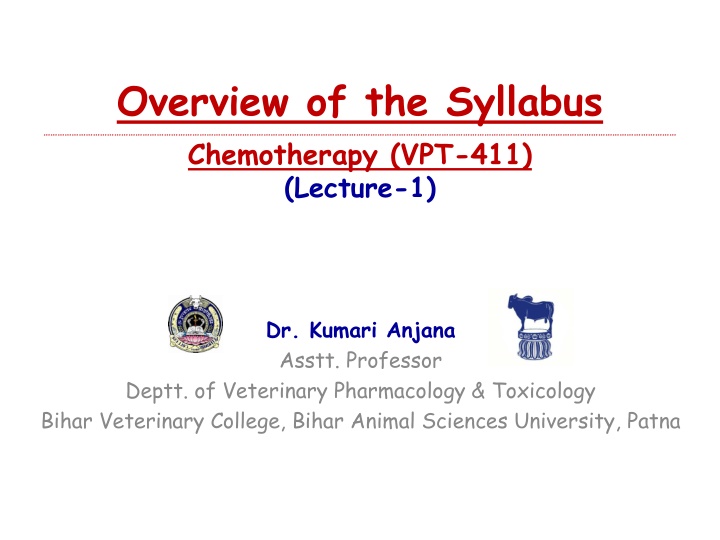
Veterinary Chemotherapy Syllabus and Antibacterial Agents Overview
Explore the syllabus of veterinary chemotherapy including general principles, antimicrobial agents, classification, and resistance. Learn about antibacterial agents like sulphonamides, fluoroquinolones, antibiotics, and miscellaneous agents. Discover details about antifungal agents for veterinary use.
Download Presentation

Please find below an Image/Link to download the presentation.
The content on the website is provided AS IS for your information and personal use only. It may not be sold, licensed, or shared on other websites without obtaining consent from the author. If you encounter any issues during the download, it is possible that the publisher has removed the file from their server.
You are allowed to download the files provided on this website for personal or commercial use, subject to the condition that they are used lawfully. All files are the property of their respective owners.
The content on the website is provided AS IS for your information and personal use only. It may not be sold, licensed, or shared on other websites without obtaining consent from the author.
E N D
Presentation Transcript
Overview of the Syllabus Chemotherapy (VPT-411) (Lecture-1) Dr. Kumari Anjana Asstt. Professor Deptt. of Veterinary Pharmacology & Toxicology Bihar Veterinary College, Bihar Animal Sciences University, Patna
Syllabus of Chemotherapy
General Chemotherapy Introduction and Definition History General principles in antibacterial chemotherapy Problems with use of AMAs Choice of an Antimicrobial agents Combined use of Antimicrobial agents Prophylactic use of Antimicrobials Failure of Antimicrobial Chemotherapy
Classification of Antibacterial agents On the basis of chemical structure On the basis Mechanism of action On the basis of Type of organisms against which primarily active On the basis of Structure of activity On the basis of Type of action On the basis of Source
Antibacterial Resistance Mutation Single step Multistep Gene transfer Conjugation Transduction Transformation
Sulphonamides Sulphonamides Introduction Classification Mechanism of action Clinical uses Combination with diaminopyrimidines, Sulfones
Fluoroquinolones Nitrofurans Nalidixic acid and Fluoroquinolones Introduction Classification Mechanism of action Clinical uses
Antibiotics Penicillins Cephalopsorins, Aminoglycosides, Tetracyclines, Chloramphenicol, Macrolides, Polypeptides.
Miscellaneous agents Methenamine Bacitracin Rifampin Novobiocin, Viginamycin, Lincosamides Vancomycin.
Antifungal agents Topical Systemic agents Anti-fungal antibiotics. Introduction Classification Mechanism of action Clinical uses
Anthelmintics Drugs used against cestodes, Drugs used against trematodes, Drugs used against nematodes, Drug resistance, Broad-spectrum anthelmintics.
Antiprotozoal agents Drugs used in trypanosomosis, Drugs used in theileriosis, Drugs used in babesiosis, Drugs used in coccidiosis, Drugs used in amoebiosis, Drugs used in giardiasis Drugs used in trichomonosis.
Ectoparasiticides Introduction Classification Concentration Uses
Antiviral Agents Introduction Classification Mechanism of action Clinical uses
Anticancer agents Introduction Classification Mechanism of action Clinical uses
Antiseptics and disinfectants Introduction Classification Concentration Uses
Growth promoters Introduction Classification Mechanism of action Clinical uses
Indigenous drugs Common indigenous drugs of plant origin of proven pharmacological therapeutic efficacies in various animal ailments. and New drugs and drug formulations
Books Essential of Medical Pharmacology by K.D.Tripathi Essential of Veterinary Pharmacology and Therapeutics by H.S. Sandhu and Rampal Synopsis of Veterinary Pharmacology and Toxicology by V.Vani.P.vadlamudi and K.M.Koley Veterinary Pharmacology and Toxicology by B.K.Roy Veterinary Pharmacology and Therapeutics by Jim E. Riviere and Mark G.Papich

